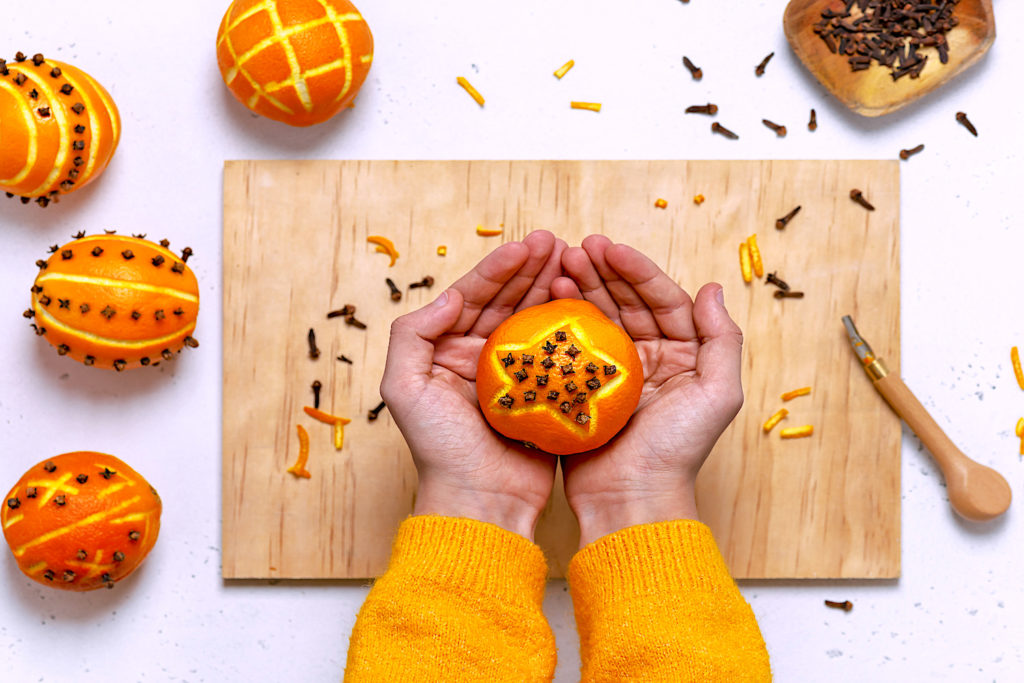
A Craft Undone: The Unmaking of a Pomander
I love pomander balls. I love the way they look and smell, and I love the process of making them. I have written recently about how I discovered pomander balls and came to think of them as the perfect reflection of my personal tastes.
My first instinct for this follow-up post was to offer step-by-step instructions on how to make my favorite pomander ball. Then I remembered two important facts: 1) I’m not much for following instructions when it comes to arts and crafts, and 2) it would go against the very concept of creativity to give you directions on how to be imaginative in the same way that I am.
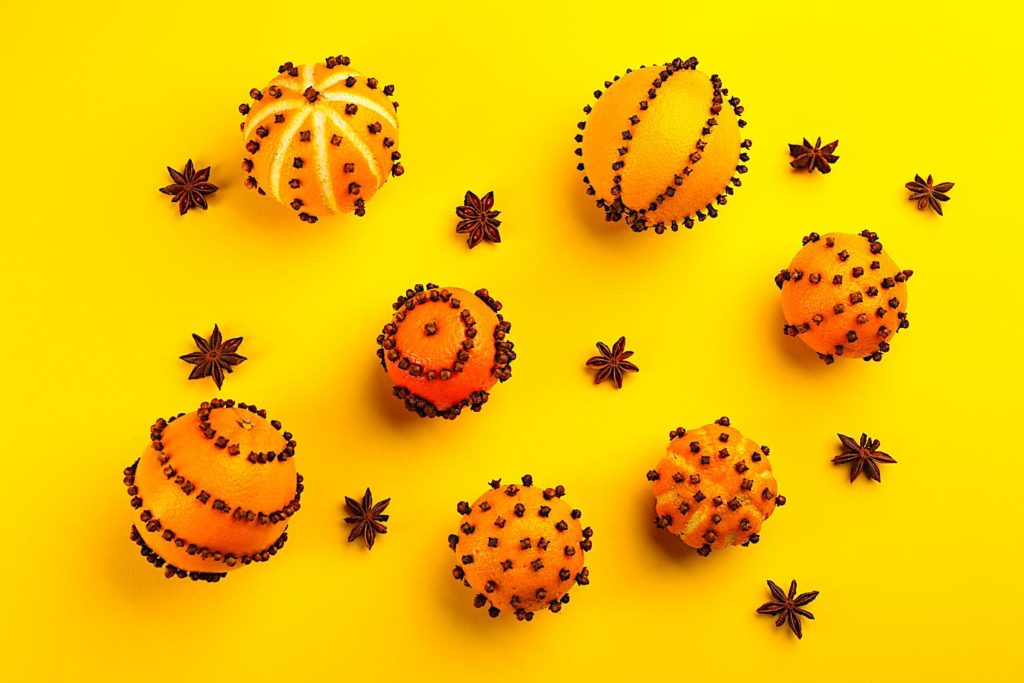
One of my goals with these essays is to provide a starting point for creative action in hopes that you will run with the ideas in your own unique directions. To that end, I would like to offer up four ways to undo my favorite winter craft so that you can remake them (or not) in ways that are most satisfying to you.
What is a Pomander Ball?
Nowadays pomander balls are a decorative and aromatic craft usually made around the winter holidays. They are commonly composed of oranges pierced with spikey cloves and decorated with colorful ribbons. As they dry, the aromas of the fruit and spices permeate the air.
While modern pomander balls are purely decorative, they have a long and interesting history. They date back to the Middle Ages when nobility and commoners alike used them for a variety of purposes. People would wear the smaller medieval versions around their necks as perfume and adornment, but also to ward off disease and evil spirits.
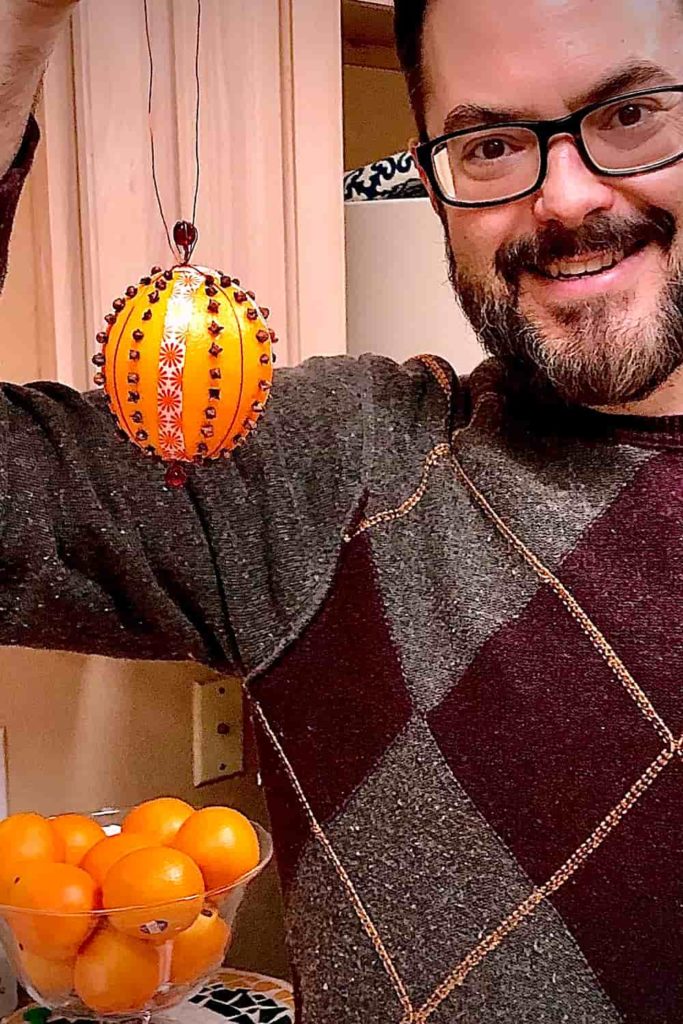
I don’t ascribe any medicinal or magical qualities to my pomanders. I just love their bright colors and peppy combination of citrus and spice. What follows are four ways to make your pomander balls as different from mine as your imagination allows.
Choose a Fruit (Or Not)
Modern pomander balls are typically made of a piece of fruit. I use oranges (because they are my favorite), but the name “pomander” is associated with a different fruit altogether. “Pomander” comes from the French “pomme d’ambre,” or “apple of amber.” I could imagine using apples or some other fragrant fruit like lemons or limes as their base.
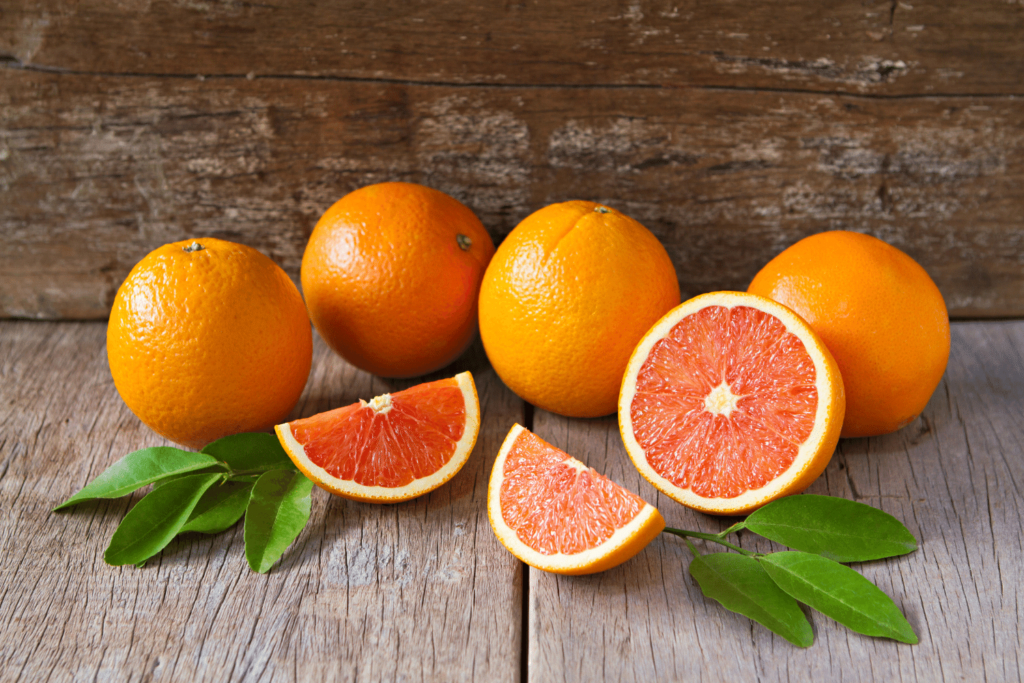
I do not like flowery aromas, but there is another tradition of making pomanders out of blooms and petals (although that version probably works best in the warmer months of the year).
I associate pomanders with the winter holidays, and so citrus is a good option for me, as these fruits are particularly available in the U.S. between December and March. The most important aspect of the base is that it be fragrant and able to support the other decorative elements you wish to add.
Choose Your Spices (or Don’t)
The primary reason for making pomanders as a craft is their fragrance, and many people add other aromatic elements to their pomander bases. I use whole cloves in my pomanders because I love the smell. Another advantage of this spice, which is a flower bud, is that the individual pieces have a spikey base. That pointy end can be used to pierce the fruit, so the spice becomes an element of the decoration as well as part of the fragrance.
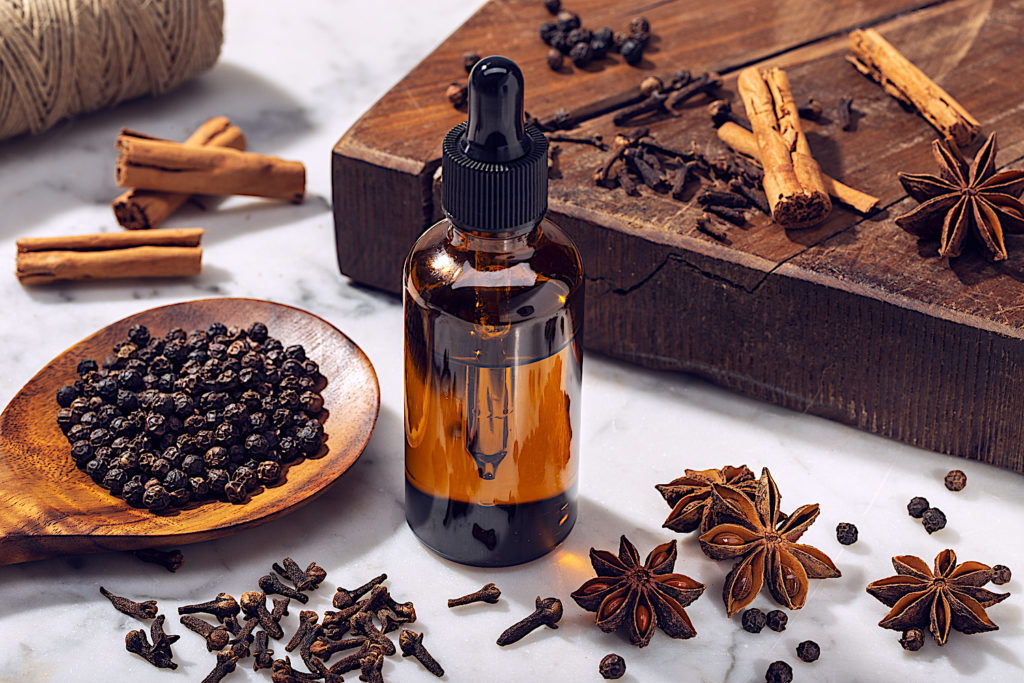
I have known people to use ground spices that they adhere to the fruit base with a sticky (often sugary) substance. As the sweet adhesive dries, the spices stick to the fruit.
I have often used essential oils to give my pomanders an aromatic boost when they begin to dry out. In the future, I would like to find ways to attach star anise or pieces of cinnamon bark to my creations. What other fragrant elements can you imagine adding to your designs?
Choose Your Decorations (Or Leave Them Naked)
When I make my pomander balls, I keep them simple because that’s my aesthetic. I use a ribbon and a couple of beads, but I usually let the fruit and spices take center stage. Everyone’s pomanders will be different in terms of decoration.
A couple of years ago, I made pomanders with the kids in my family, and they went wild with colorful decorations. Their pomanders were so much more creative than mine (children, as a rule, are highly imaginative).
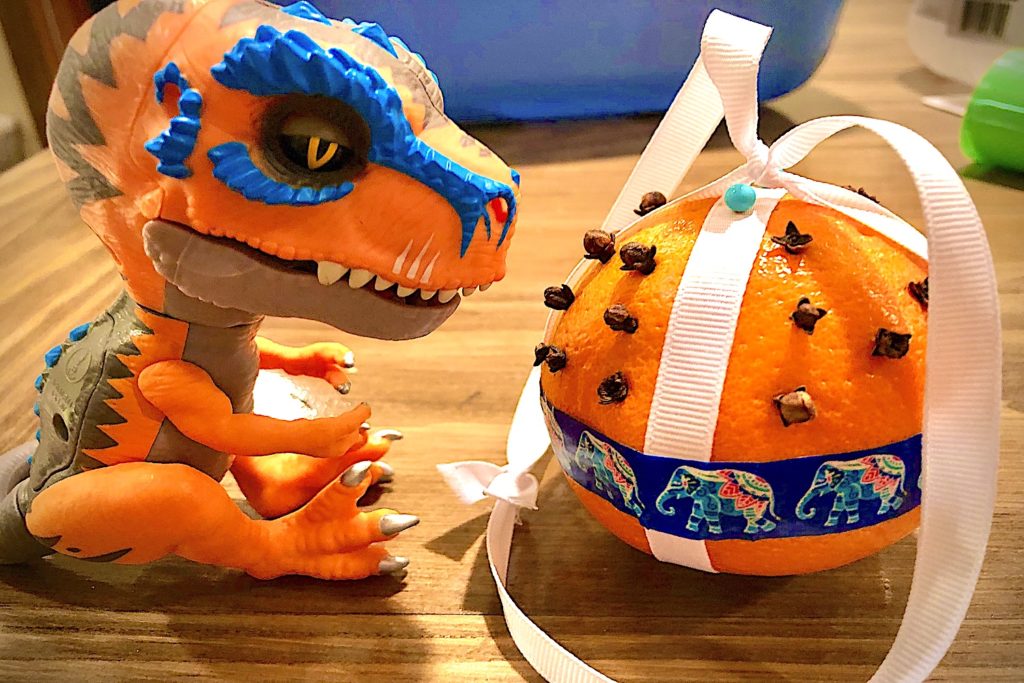
I have seen pomanders displayed with other festive elements, like pinecones, holiday ornaments, or whole cranberries. How will your personal sense of style affect the look of your creation?
Choose Your Display (Or Hide Them Away)
I most often hang my pomander balls using crafting wire. I make a little cage out of the wire, and then hang the pomander in an archway or from a doorknob. I have also seen them displayed in a decorative bowl. There are as many ways to display them as there are to decorate them.
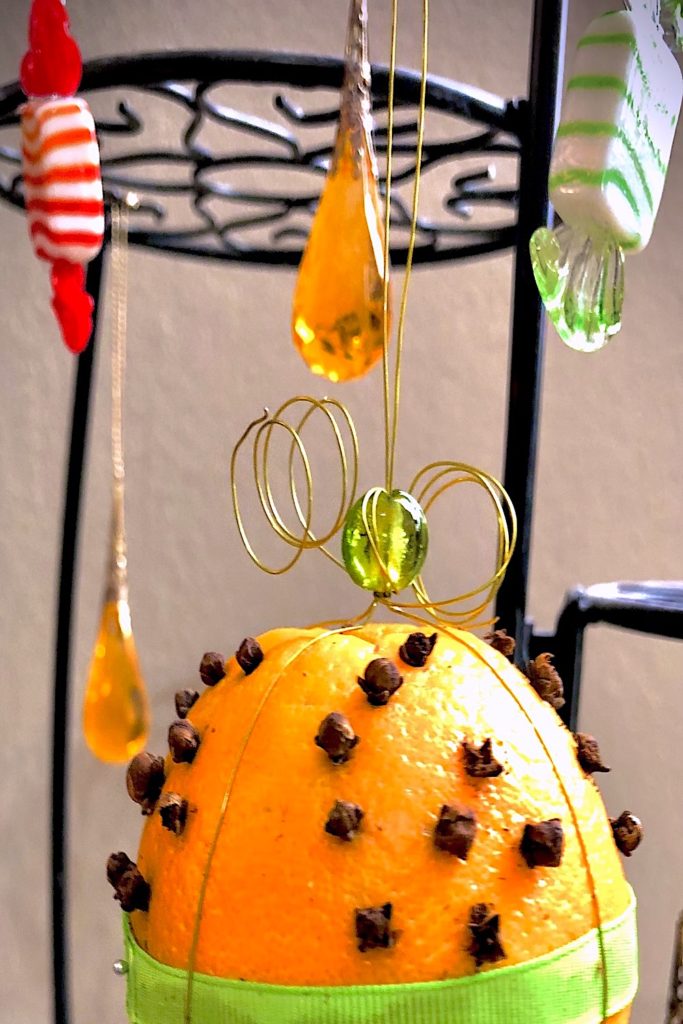
You don’t even have to display your pomanders. Of last year’s batch, I kept one on my bedside stand because I love to wake up to the smell. I could also imagine keeping one in a drawer to make its content smell nice.
Unmaking the Craft of Your Life
I fell in love with pomander balls because I discovered they were made from elements that I love. In that process of discovery and discernment, I also let go of some other holiday traditions that didn’t fit my preferences quite as well. Maybe pomander balls won’t be for you. Or perhaps they will, but in a different form than the ones I make.
Regardless, I invite you to examine your preferences to make a craft of your entire life. It will require dismantling some aspects and enhancing others. The important thing is that the end product reflect the unique and creative individual you know yourself to be.